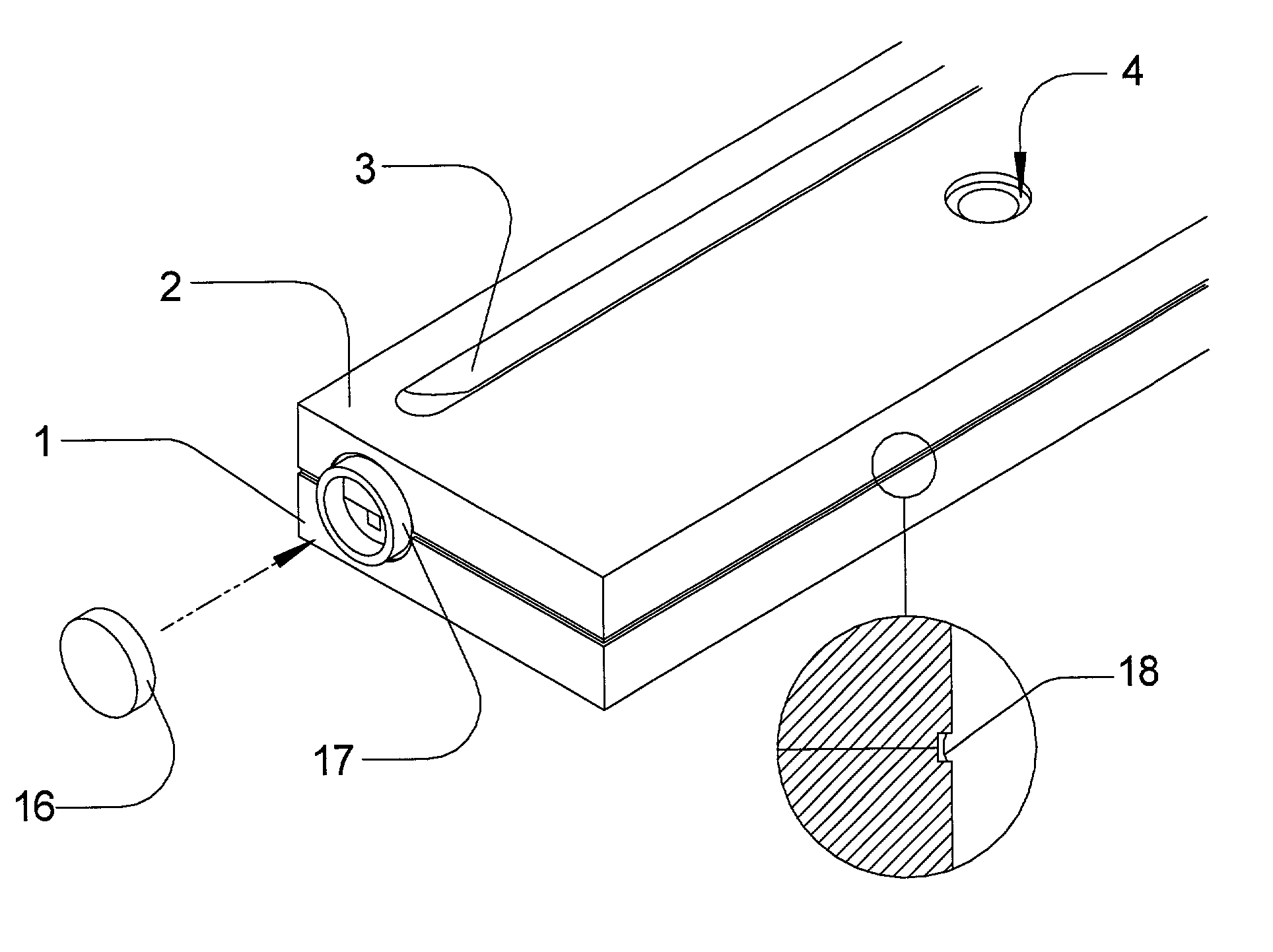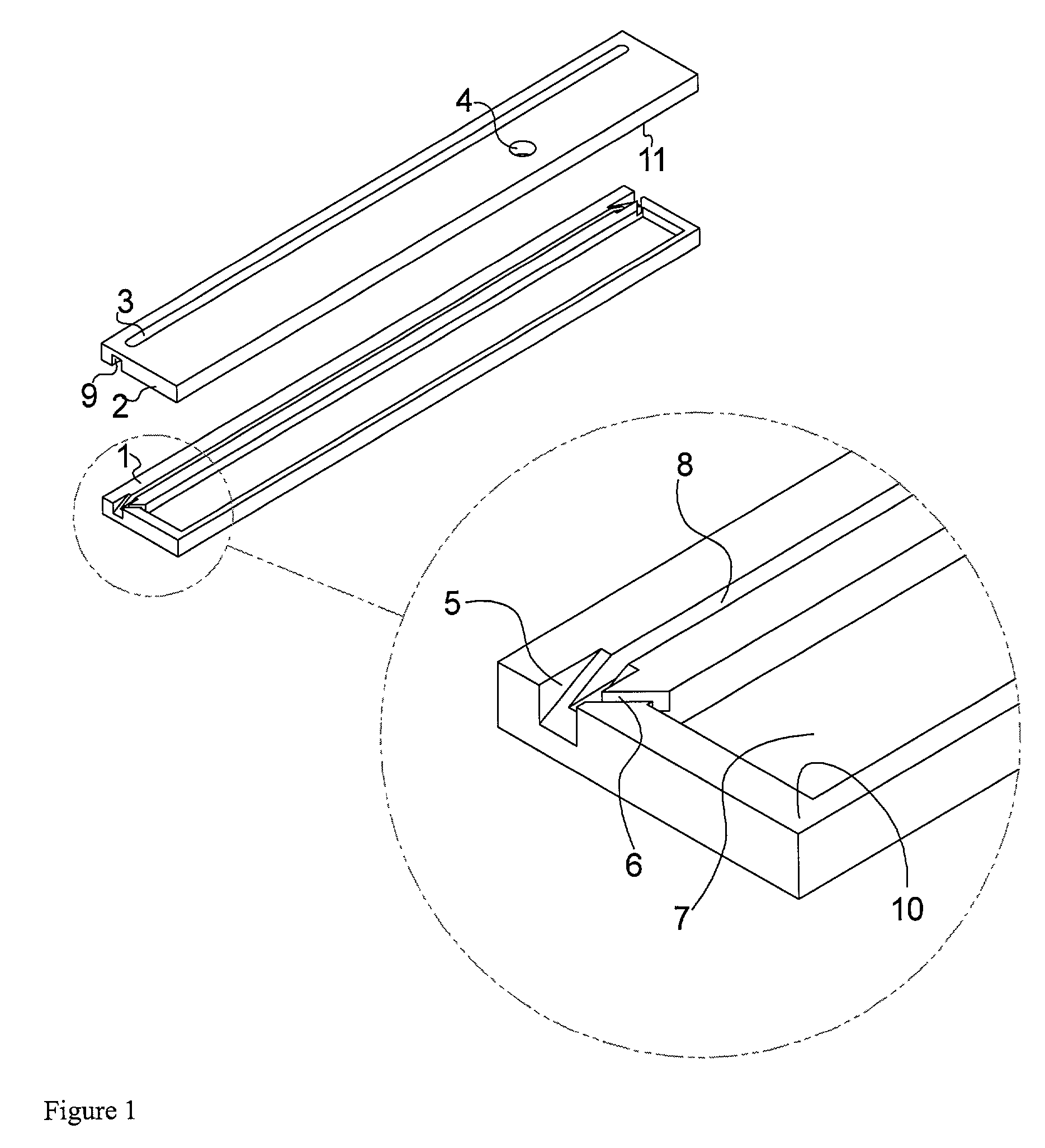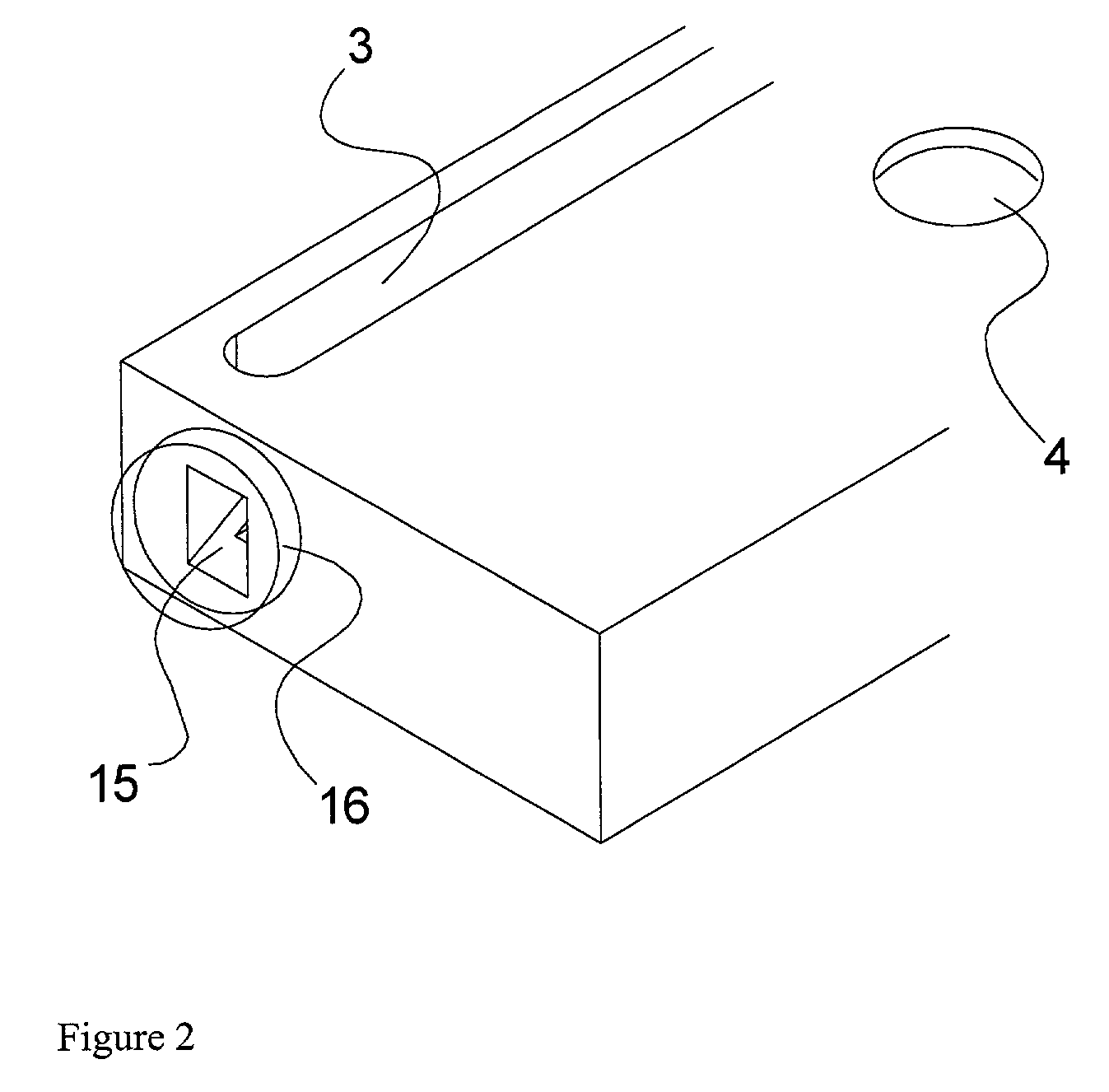Monolithic ceramic laser structure and method of making same
a monolithic ceramic and laser technology, applied in the field of gas laser technology, can solve the problems of inability to mass produce a laser with consistency, inability to protect the laser from mechanical as well as thermal shock, and often prove impractical to cool the laser without water, etc., and achieve the effect of reducing the cost of production
- Summary
- Abstract
- Description
- Claims
- Application Information
AI Technical Summary
Problems solved by technology
Method used
Image
Examples
Embodiment Construction
[0036] FIG. 1, shows one embodiment of an RF excited laser body assembled from two halves of alumina ceramic 1,2. The lower half is prepared with internal features 5,6,7,8 which can be accomplished by using a surface grinder. Feature 6 is the gas communication channel between the waveguide bore, 8 and the reservoir, 7. The gas communication channel may be angled in such a way as to allow an uninterrupted grinding path from the interior of the reservoir through to the waveguide setback region 5.
[0037] The waveguide setback slot 5 suppresses potential higher order modes from oscillating between the resonator mirrors (not shown). The setback slot 5 may be created by use of a reciprocating surface grinder set to an angle to produce the desired setback and avoid retro reflections from occurring. In particular, in the example shown in FIG. 1 the angle of this slot 5 is not 45.degree. so as to avoid the condition of retroreflection which can result in unintended modes being present within ...
PUM
| Property | Measurement | Unit |
|---|---|---|
| surface roughness | aaaaa | aaaaa |
| surface roughness | aaaaa | aaaaa |
| angle | aaaaa | aaaaa |
Abstract
Description
Claims
Application Information
 Login to View More
Login to View More - R&D
- Intellectual Property
- Life Sciences
- Materials
- Tech Scout
- Unparalleled Data Quality
- Higher Quality Content
- 60% Fewer Hallucinations
Browse by: Latest US Patents, China's latest patents, Technical Efficacy Thesaurus, Application Domain, Technology Topic, Popular Technical Reports.
© 2025 PatSnap. All rights reserved.Legal|Privacy policy|Modern Slavery Act Transparency Statement|Sitemap|About US| Contact US: help@patsnap.com



